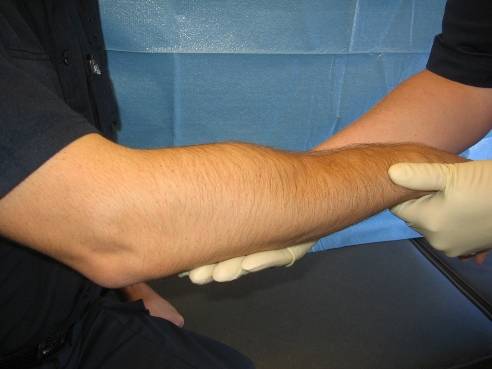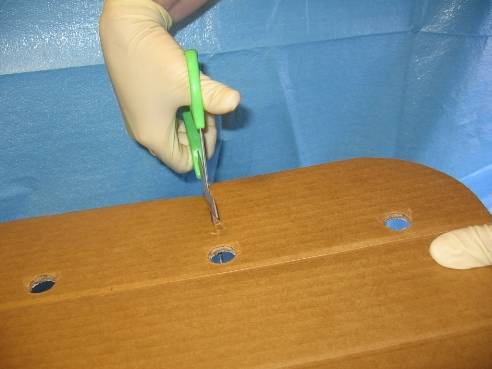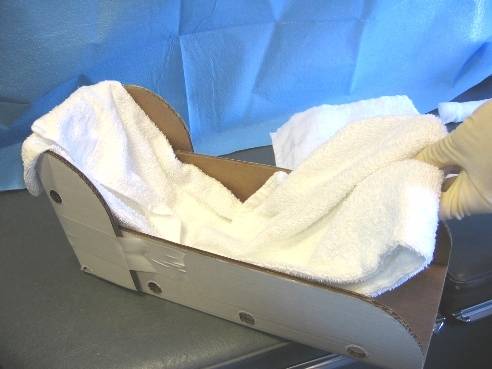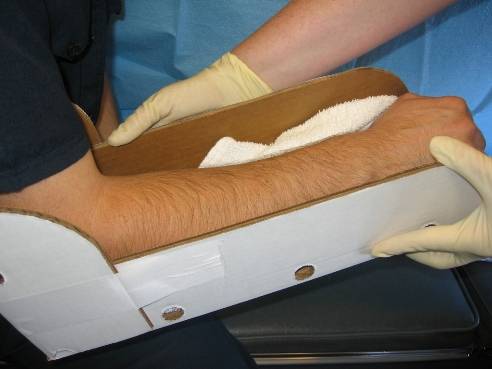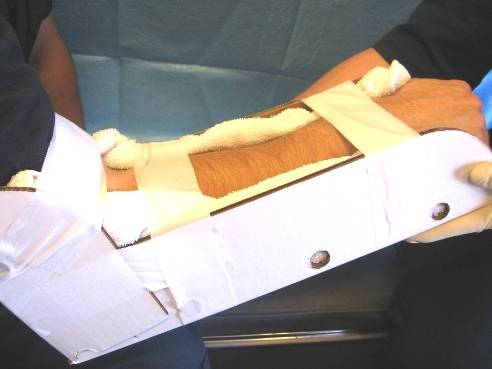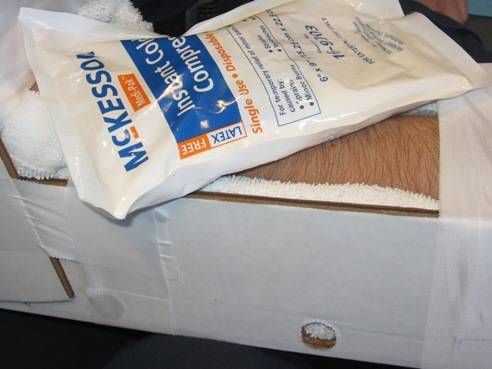|
Broken Bones
- If the foot or hand at the end of the injured
extremity is cold or blue, seek medical assistance immediately!
-
Do NOT straighten the extremity if it is deformed - keep it in the position
found.
-
Stabilize the extremity. Use padding to keep it immobile.
-
Put ice on the injury. Never put the ice directly on the skin - put it in a bag
first. After holding ice on the injury for about 20 minutes, take it off for 20
minutes.
-
Anti-inflammatory drugs like ibuprofen or naproxen will help with pain.
-
Elevate the extremity to reduce swelling.
Signs and symptoms:
-
pain (almost always present)
-
swelling
-
bruising
-
deformity (leg appears out-of-place)
-
numbness or tingling
-
broken skin with bone visible
-
limited mobility of the leg
Broken Arm
-
Check ABC's. Make sure the victim has an Airway, is Breathing, and has
Circulation.
-
Broken arms can be very distracting injuries. Most of the time, however, they
look worse than they are.
-
Control bleeding.
-
Look for other injuries. If a victim shows signs of injury to the head, neck, or
back, DO NOT move the victim.
-
Cover any broken skin with sterile dressings. If needed, the wound can be rinsed
-- try to use sterile water or saline solution.
-
If an ambulance is responding, have the victim remain still and wait for the
ambulance. If an ambulance is unavailable, it may be necessary to splint the
broken arm. Be sure to immobilize the joints (elbow, wrist, shoulder) above and
below the break. Do not wrap the arm too tight.
-
Put ice on the break to reduce swelling. Put a sheet or towel between the ice
and the skin to prevent frostbite. Leave ice on for 15 minutes, then remove ice
for 15 minutes.
-
Splinting the broken arm, make a sling to support the arm's weight and wrap a
swath around the victim's torso to immobilize the broken arm.
Splinting:
Broken Leg
-
Check ABC's. Make sure the victim has an Airway, is Breathing, and has
Circulation. Broken legs can be very distracting injuries. Most of the time,
however, they look worse than they are.
-
Control bleeding.
-
Look for other injuries. If a victim shows signs of injury to the head, neck, or
back, DO NOT move the victim.
-
Cover any broken skin with sterile dressings. If needed, the wound can be rinsed
-- try to use sterile water or saline solution.
-
If an ambulance is responding, have the victim remain still and wait for the
ambulance. If an ambulance is unavailable, the broken leg may need to be
splinted. Be sure to immobilize the joints (knee, ankle, hip) above and below
the break. Do not wrap the leg too tight.
-
Put ice on the break to reduce swelling. Put a sheet or towel between the ice
and the skin to prevent frostbite. Leave ice on for 15 minutes, then remove ice
for 15 minutes.
-
Elevate the leg above the level of the heart, if possible.
-
Lay the victim on his or her back to reduce the chance of shock. Cover the
victim with a blanket.
-
Remember, DO NOT move a victim with suspected head, neck, or back injuries
unless it is to keep rescuers or victim safe.
-
DO NOT move a victim of a broken leg unless necessary for the safety of rescuers
or victim.
-
DO NOT straighten a broken leg or change its position unless the victim's foot
(on the leg with the break) is cold, blue, numb, or paralyzed. Only attempt to
return a deformed leg to the anatomical position.
-
If splinting the broken leg, try using a broom handle, long wooden spoon, tube
from a vacuum cleaner, or a jack handle from the car.
-
First Aid Case List -
back to top - |
